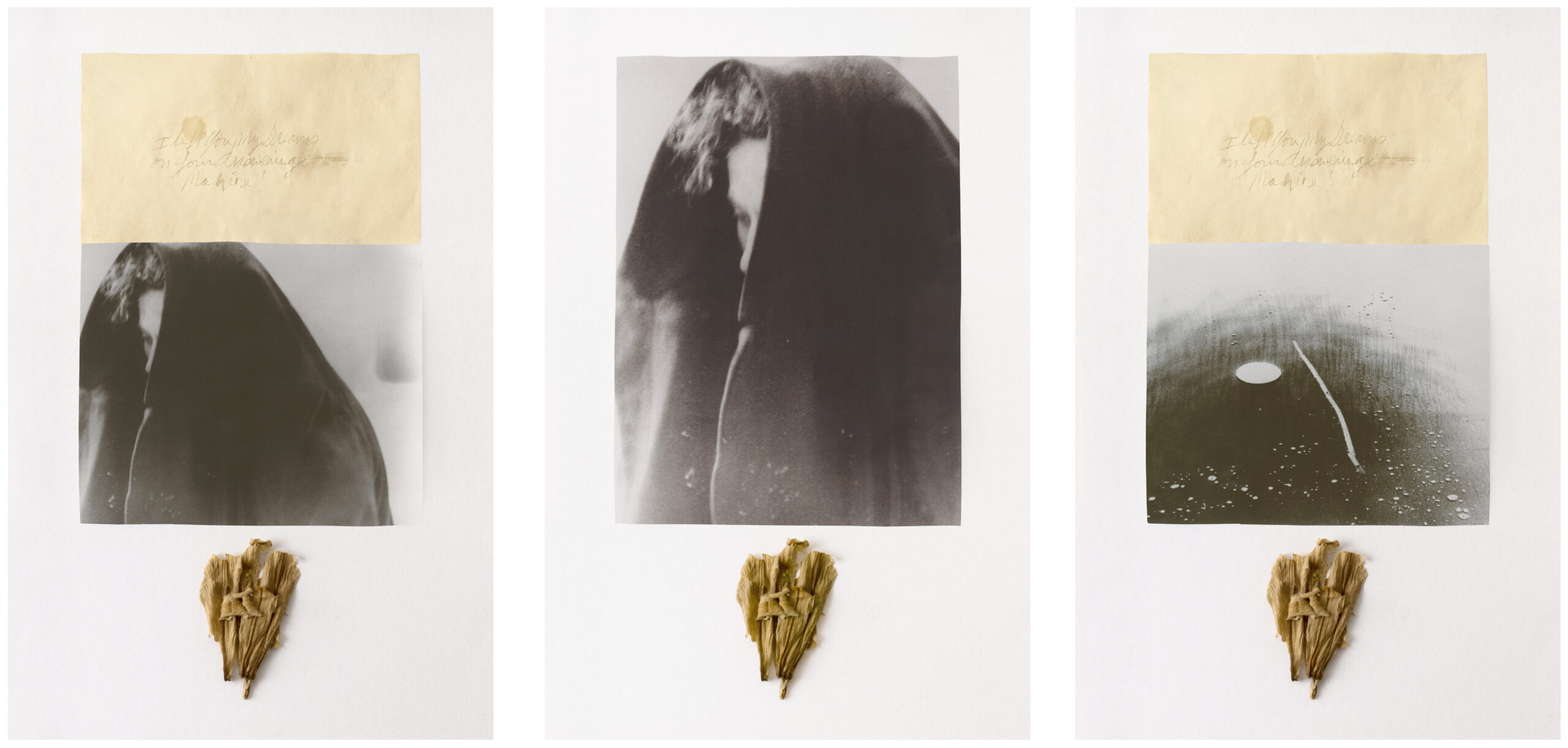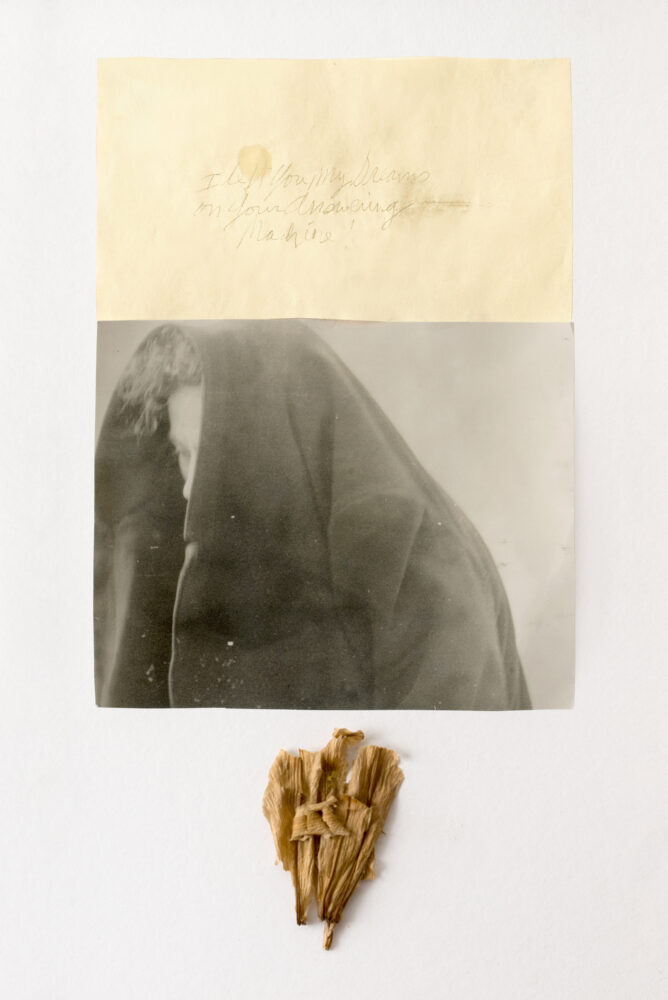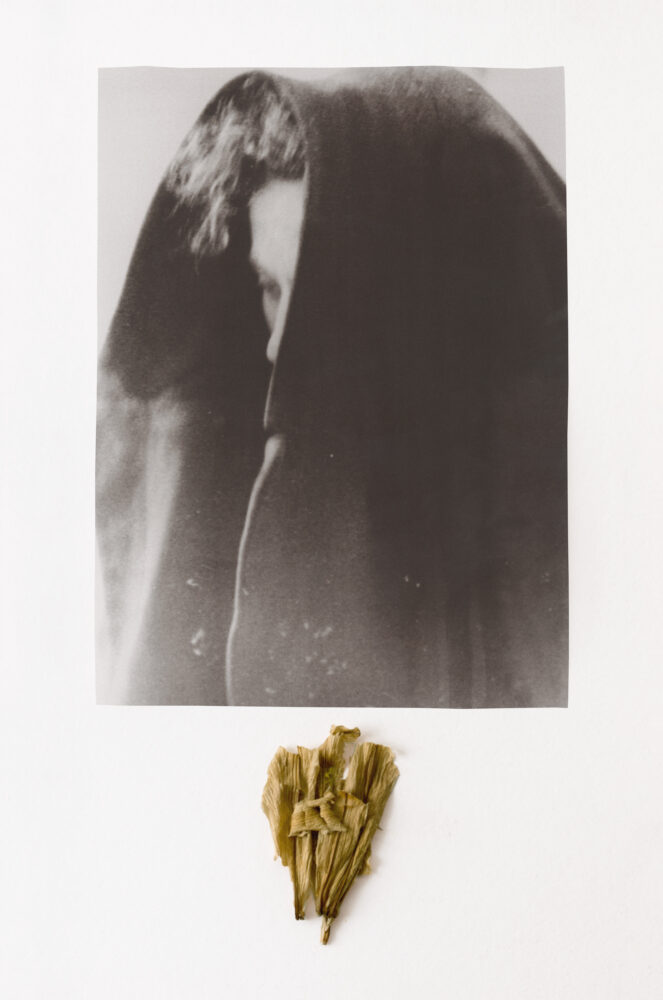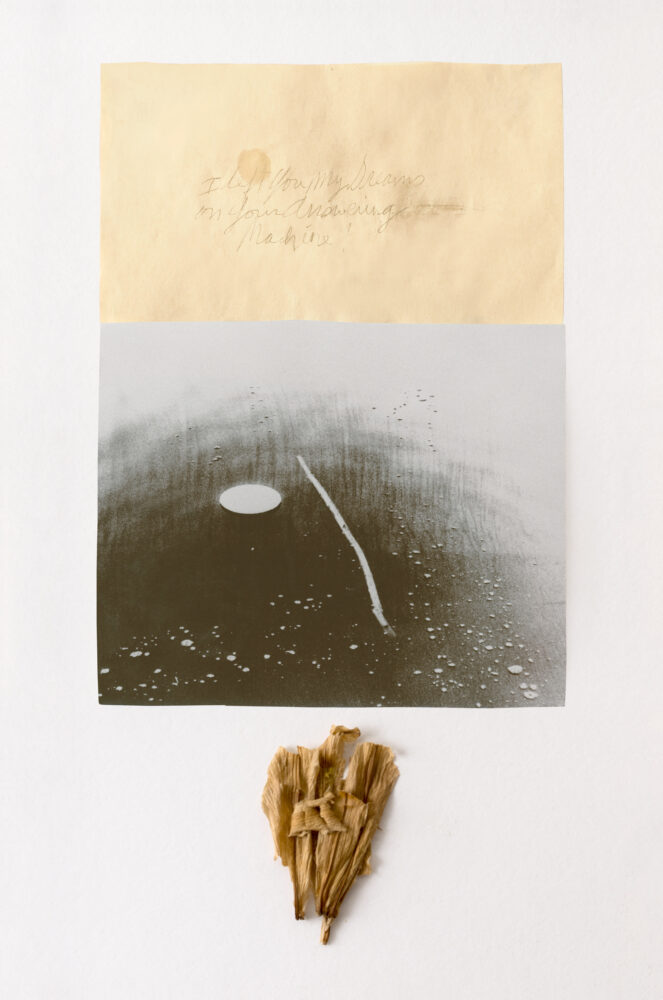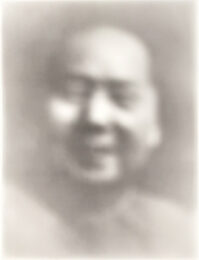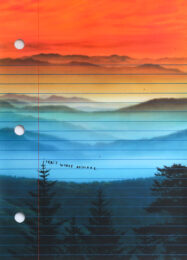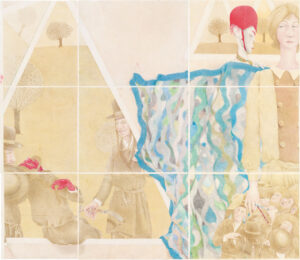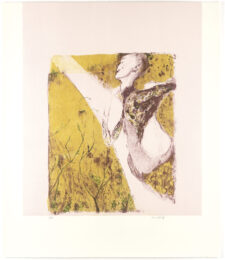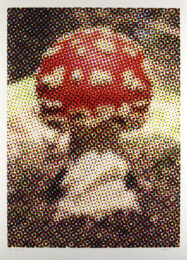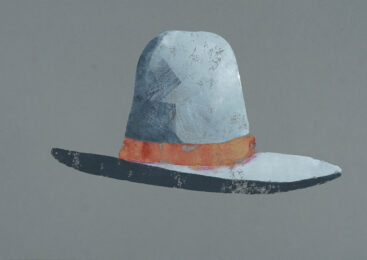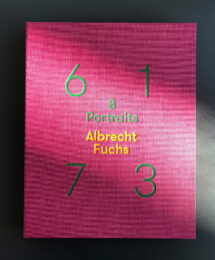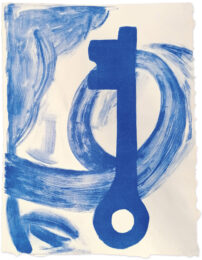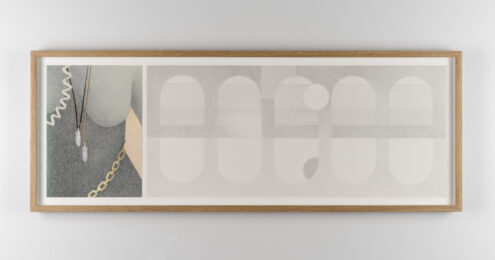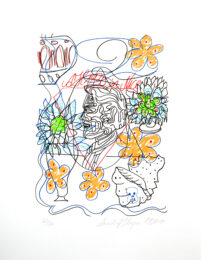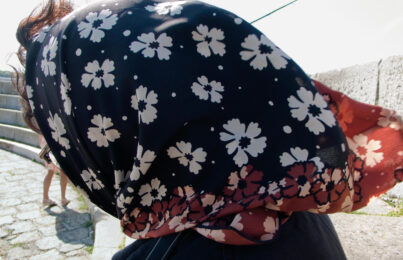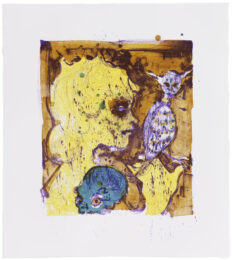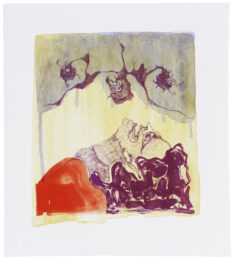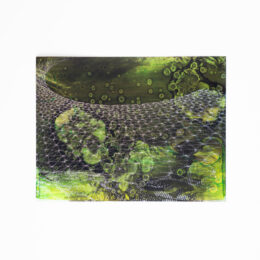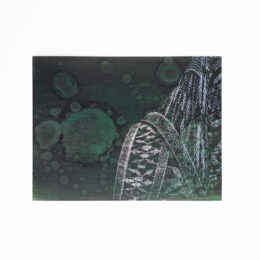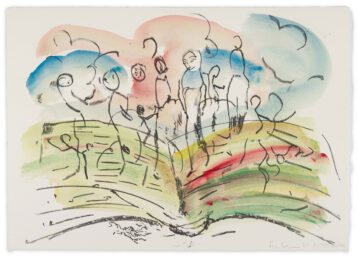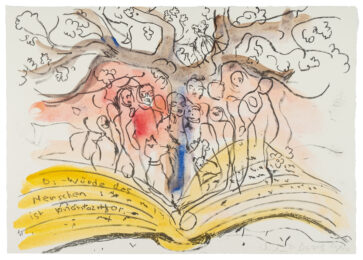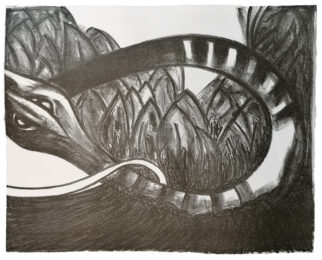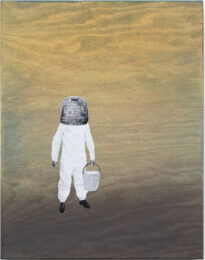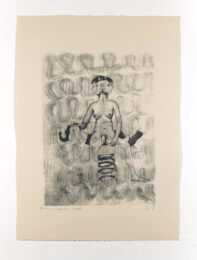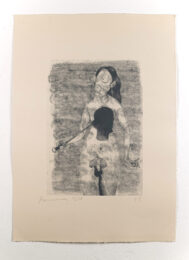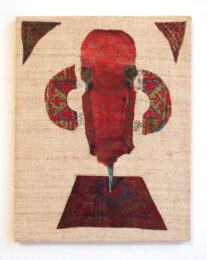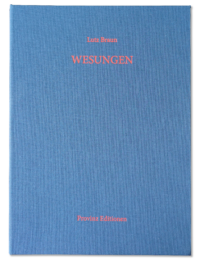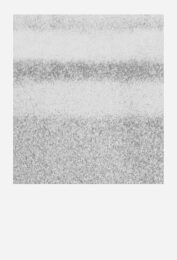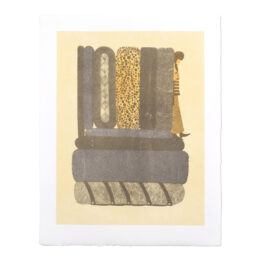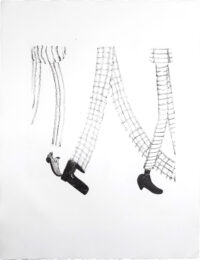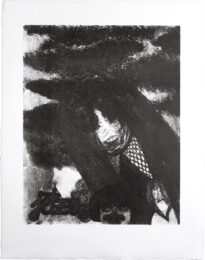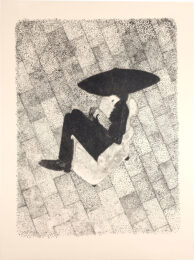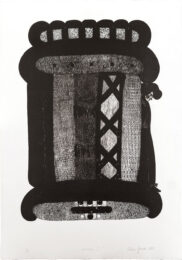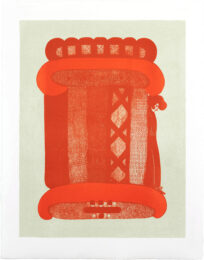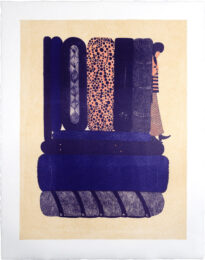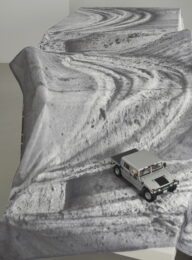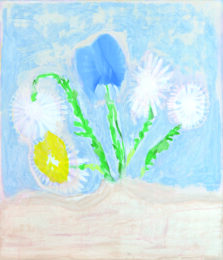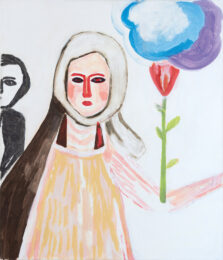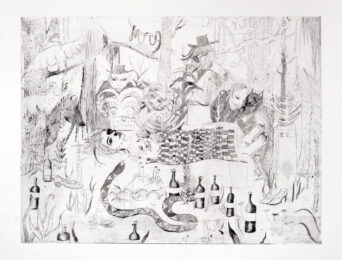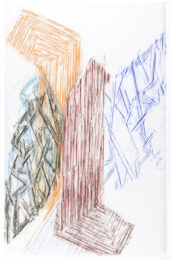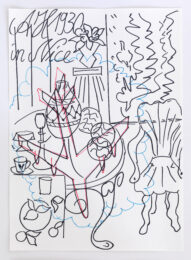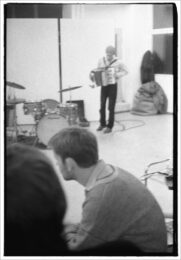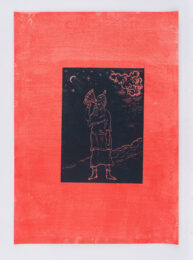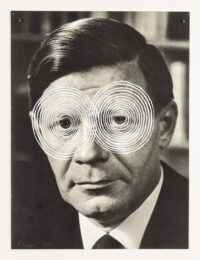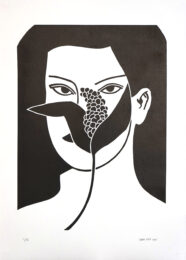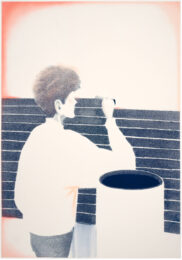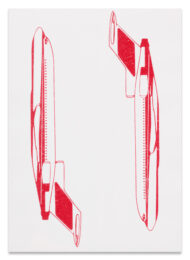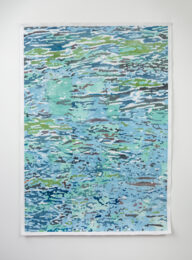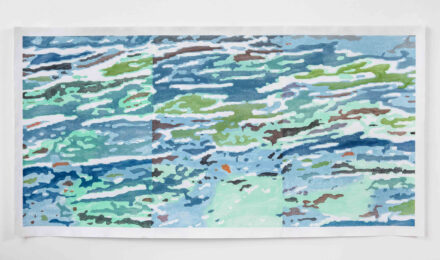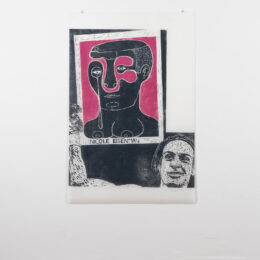Details — Click to read
If the rain comes / They run and hide their heads / They might as well be dead, 1991/1997/2013
Archival Fine Art Print on Hahnemühle
41 x 27 cm, three motifs
Edition: 10 each (2 EA), signed, numbered
500 €, folder with all three motifs: 1,200 €
The starting point for Dahn’s editions for Provinz is the film “Die schwimmende Tasse” (the floating cup) from 1991 (approx. 24 min, 16mm, b/w film; by Johannes Stüttgen, Boscher Theodor und Walter Dahn). The film shows the cup(s) of the title and other props (lumber, saucers, etc.) floating on the surface of the water of a small lake near Düsseldorf. Tranquil black-and-white pictures of objects, adrift and taking shape, are accompanied by a sound track on which Johannes Stüttgen recites a text he wrote about fundamental, Greek philosophers that is quasi thrown to the wind, that is, repeatedly, in part or completely, drowned out by the recording’s natural outdoor noise. The film has the look of being improvised and fragile. Not till a second look does it become clear that the work has been minutely planned. Part of this plan was the stage-set photographs by the Düsseldorf photographer Dinah Frank, who produced the motif then used in the edition of the cups adrift on the surface of the water, as well as the portrait of Walter Dahn. This portrait of the artist, who pulled his coat collar over his head as protection against the wind, makes you involuntarily think of the famous shot by Henri Cartier-Bresson, who photographed Alberto Giacometti in 1961 in a similar pose. Cartier-Bresson’s theory of the “decisive moment”—the seemingly chance encounter with a picture motif which is actually preceded by a concentrated analysis that is crucial for the image’s final success—is also applicable to Walter Dahn’s work.
Walter Dahn (1954 born in St. Tönis / Krefeld and lives in Cologne) very early celebrated sensational success with the neo-expressionist “Junge Wilde” of Cologne’s “Mülheimer Freiheit”; he was internationally exhibited and took part in the 1982 documenta at the age of 28. But soon afterwards the artist invented his new self and immediately rejected “grand painting pronouncements”. In a 1985 exhibition at Paul Maenz’s in Cologne, Walter Dahn showed his first one-of-a-kind silkscreen prints. The combination of technical and painterly principles that is possible in the serigraph is what still today (along with small-scale works on cardboard and paper) seems to Walter Dahn “the only way to continue to paint”.

